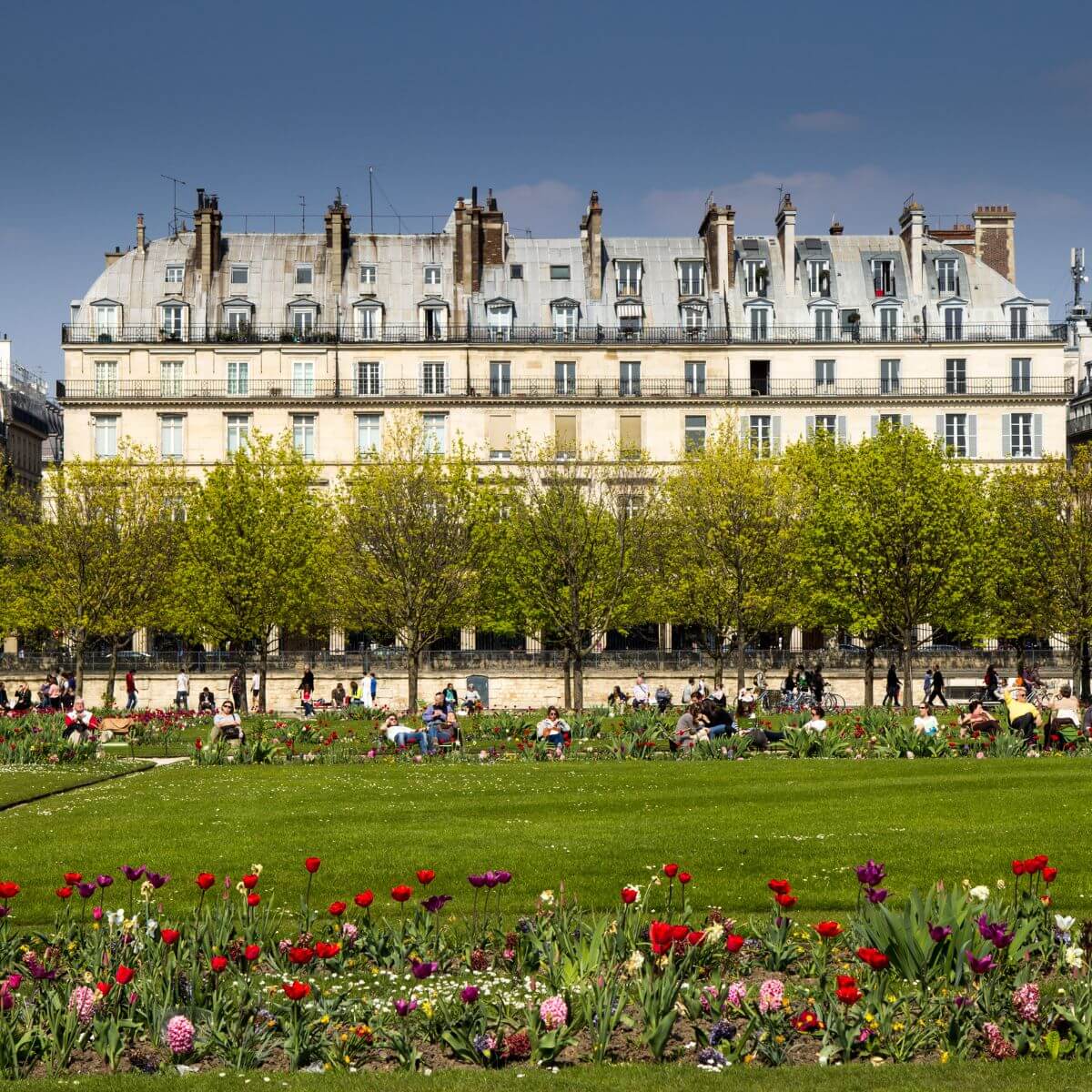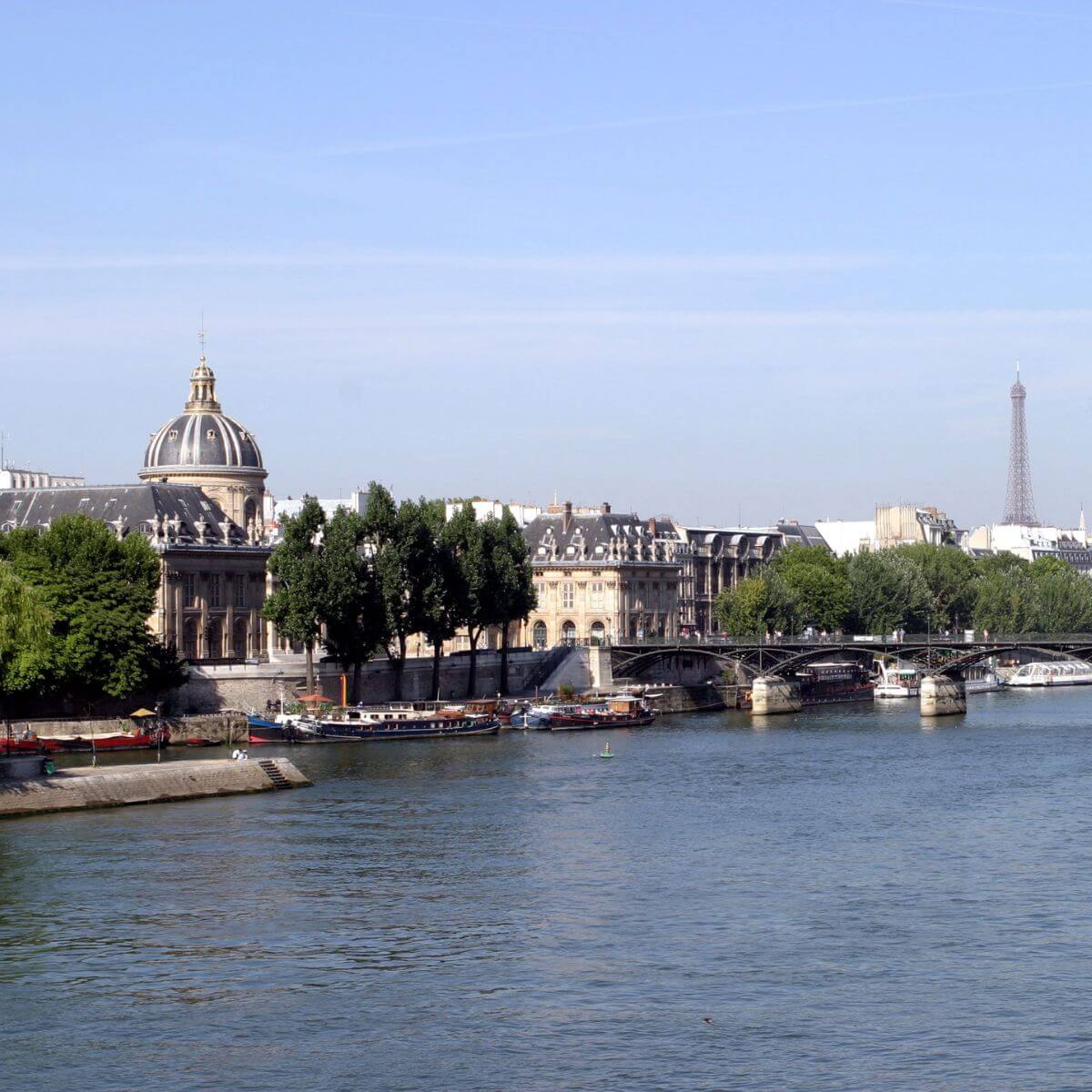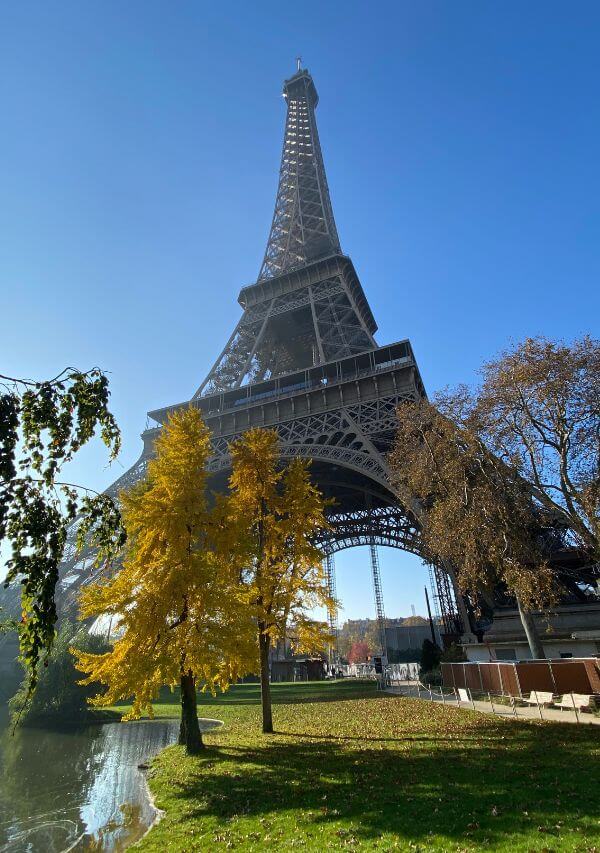What are The Most Famous Bridges in France?
Bridges are necessary. They connect to different places. A priori, it would seem that they were designed to be crossed. But some bridges are a destination in themselves, for their history, beauty, and architecture.
If Paris is the city of light and fashion, France could be called the country of bridges. Theirs are condensed in different areas with all kinds of charms. So here we go: to cross from one bridge to another.
Alexandre III Bridge or Pont Alexandre III, Paris
Inaugurated in 1900, the Alexandre III Bridge is one of the most beautiful bridges in Paris. It connects the Champs Elysées with the Invalides district.
Its postcard character combines its value as a historical, architectural, and artistic monument. Its name refers to the person to whom it was dedicated: the then Czar of Russia, to celebrate his alliance with France.
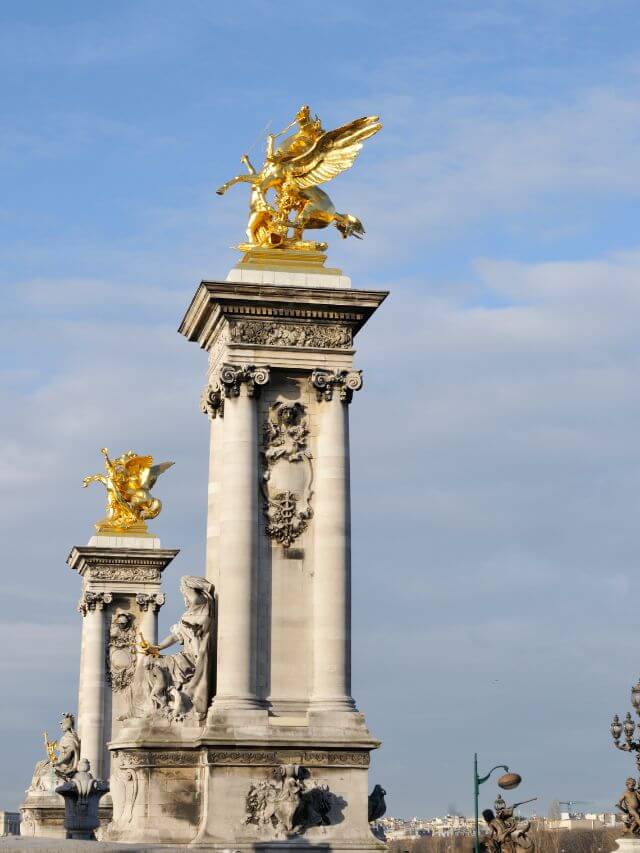
With its Art Nouveau sculptures symbolizing history and mythology, its bronze lampposts, winged horses, and views of the dome of the Invalides, the Eiffel Tower and the Seine, it is one of the most photogenic bridges in Paris.
Special recommendation: visit it at sunset or at night. It can be either by land or by boat ride on the Seine. The illumination at that time of day makes it particularly magical.
Declared Historical Monument by France, World Heritage Site by Unesco.
New Bridge or Pont Neuf of Paris
It may seem contradictory, but the so-called “Pont Neuf” is the oldest stone bridge in Paris: it dates back to the 16th century.
Its history is carved into its monumental architecture, from the statue of Henry IV to the hundreds of mascarons that look out along its 232 meters long, over each of the 12 arches.
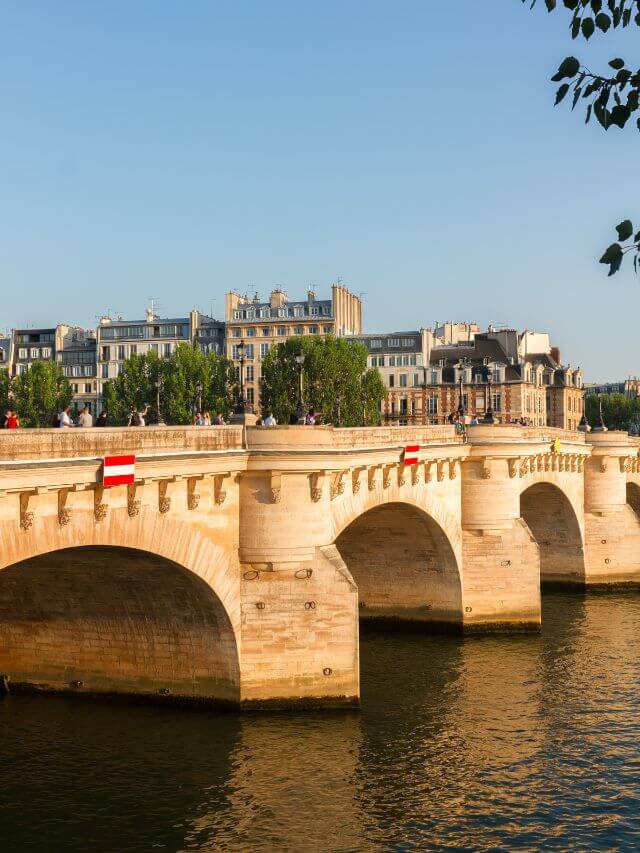
Built-in two spans on the edge of the Ile de la Cité (where Notre Dame is located), the bridge connects the Louvre area with the Saint-Germain-des-Prés district. It is a point integrated with several possible circuits.
Declared Historical Monument by France, World Heritage Site by Unesco.
Pont des Arts, formerly the Pont des Padlocks, Paris
Called the Pont or Passerelle des Arts because of its proximity to the Louvre, which connects to the Institut de France, it is a pedestrian bridge ideal for strolling and taking pictures of the river and the city.
Although it dates back to the beginning of the 19th century, the Bridge of the Arts was modified several times in its history (replacement of materials, bombardments during the war, demolitions…).
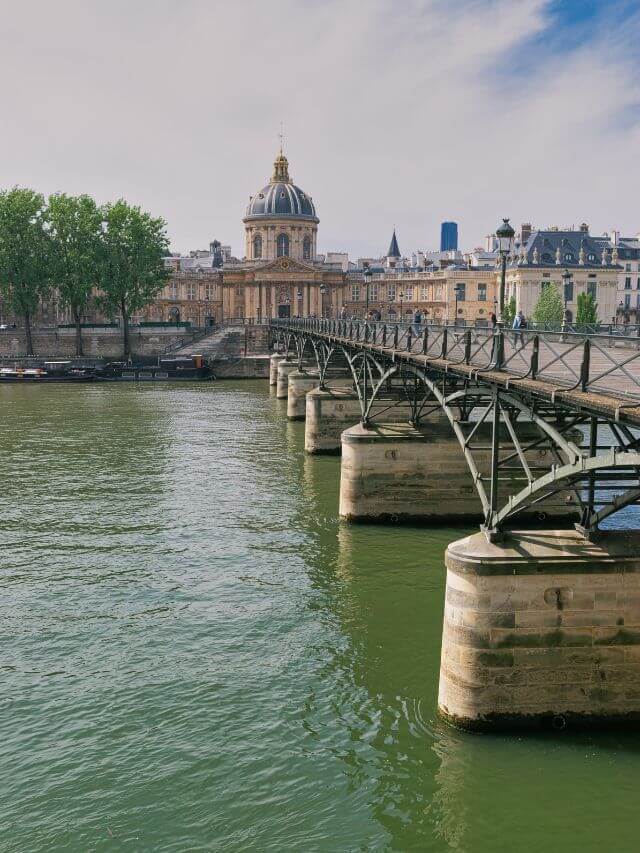
The last of its changes, in 2015, was resounding for the removal of the “love locks” that couples placed on their railings, then replaced by glass panels in pursuit of maintaining the heritage.
Declared as a Historical Monument by France.
Pont de Bir-Hakeim or Pont de Passy, Paris
The former Passy Bridge, renamed Bir-Hakeim Bridge in 1948 to commemorate that battle, dates from 1878. Located between the 15th and 16th districts, it has two main attractions: engineering and panoramic views.
The architectural engineering of the bridge consists of articulating two levels: one for metro line 6 and the other for vehicles and pedestrians.
As for the views, the main attraction is the imposing panoramic view of the Eiffel Tower.
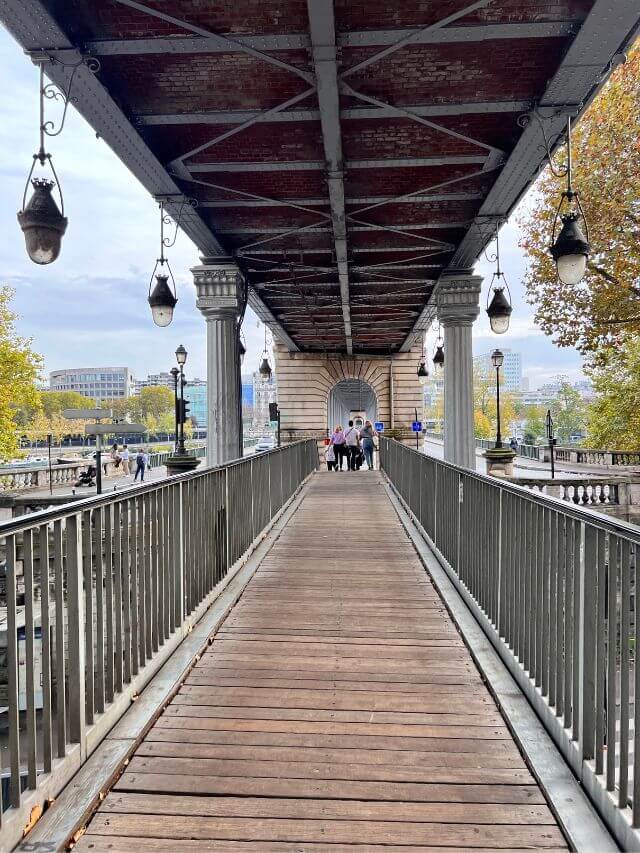
Also visible in its structure are World War II commemorative plaques and statues symbolizing Science, Labor, Electricity, and Commerce.
Film lovers may recognize this bridge as a location in films such as Inception ( Nolan, 2010) or Last Tango in Paris (Bertolucci, 1972), among others.
Declared as a Historical Monument by France.
Pont D’Iéna, Paris
The Pont d’Iena connects the 7th and 16th arrondissements, two Seine River banks facing the Trocadero Gardens on one side and the Eiffel Tower and the Ecole Militaire on the other.
Its history dates back to the beginning of the 19th century when Napoleon built it to commemorate the battle it was named. This is the origin of its decorations with warlike and imperial symbolism of eagles and warriors.
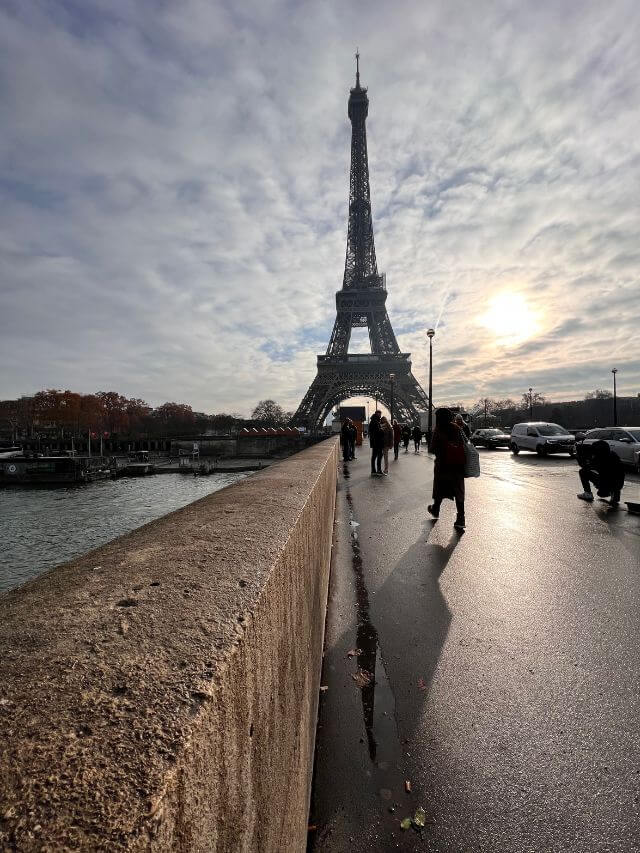
The fact that it ends at the foot of the Eiffel Tower makes it an ideal place to photograph this monument in all the splendor of its grandeur and context.
Declared Historical Monument by France, World Heritage Site by Unesco.
Pasarelle Debilly, Paris
With several name changes throughout history, the Debily Footbridge was built for the Paris Universal Exposition of 1900 to facilitate pedestrian traffic to the Eiffel Tower. Joins districts 16 and 7.
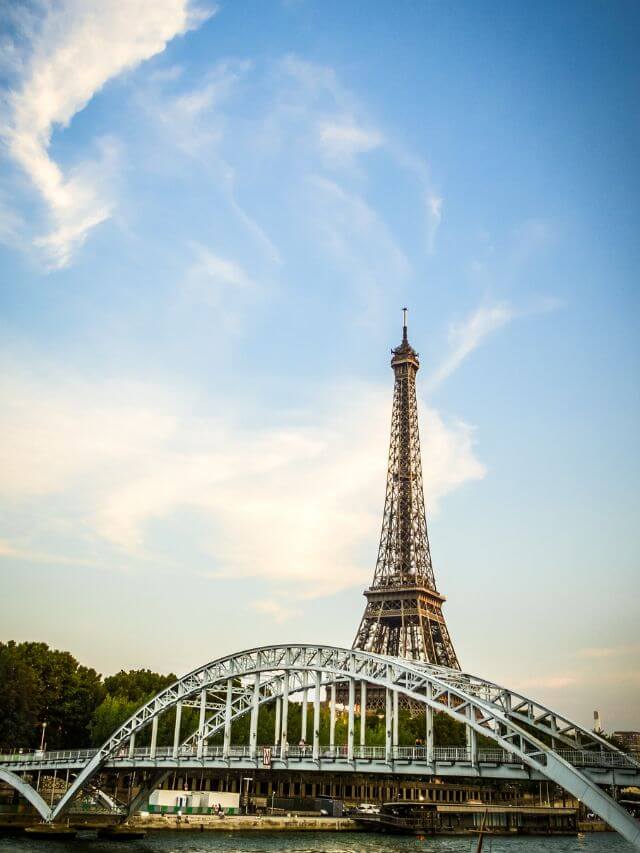
Its metallic structure, its arched shape resting on concrete and decorated with green and blue tiles, make the walkway seem to merge with the rippling of the water. It gives the feeling that walking is nothing and flying at the same time.
Declared Historical Monument by France, World Heritage Site by Unesco.
Pont Au Change, Paris
The Pont Au Change or Pont du Change links the 1st and 4th arrondissements, the Palais de Justice and the Conciergerie or Palais de la Cité. It is 103 meters long and 30 meters wide, supported by three equal arches.
It is a famous bridge for several reasons. Its history can be traced back to the 9th century, with various changes in name and functions, destructions, and reconstructions. Today, the N of Napoleon III can be seen on its arches.
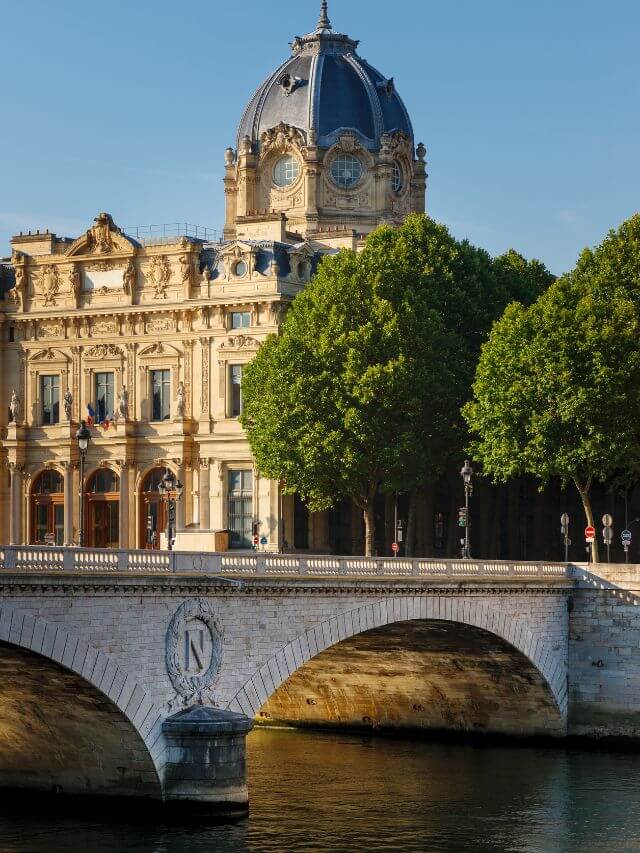
There are also its literary mentions: Victor Hugo transforms it into a recurring space in Les Miserables. In contrast, more recently, Süskind’s Perfume mentions it as a place where its protagonist had a business.
Declared a World Heritage Site by UNESCO.
Saint-Michel Bridge, Paris
Facing the splendor of Notre Dame, this bridge connects the left bank of the Seine (the Latin Quarter) with the Ile de la Cité. It is ideal for walking to the Cathedral and its area, with unmissable panoramic views.
Its history dates back to the 14th century, with successive accidents and reconstructions. It is currently composed of three arches, approximately 62 meters long and 30 meters wide.
As a curiosity: the song Mon Petit Pont (Histoire d’Amour), by Alain Bashung, is dedicated to him.
Avignon Bridge
Dating its origins to the 12th century, part of the world fame of the Pont d’Avignon may be due to the 17th-century song that made it worthy of being sung and danced as well as visited.
In fact, the bridge known as the Pont d’Avignon is officially called Pont St-Bénézet, after the legend of Saint Benedict of Avignon, who built it.
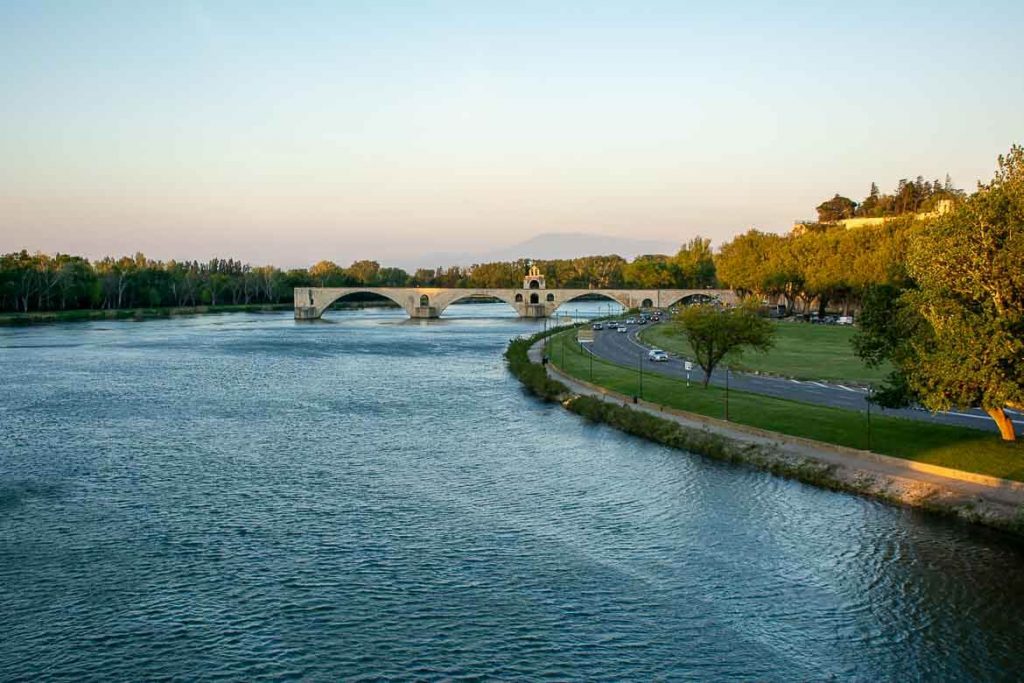
In the past, it connected Avignon with Villeneuve-lès-Avignon on the Rhone River. Only a part of its structure remains standing: 4 arches of 22.
Above one is the chapel of St. Bénézet, also known as Saint Nicholas, the patron saint to which it is dedicated.
Unesco World Heritage Site.
Milau Viaduct, near Milau
Built between 2001 and 2004, the Milau Viaduct crosses the Tarm Valley and holds the architectural record for being the highest viaduct in the world, 343 meters above the ground. It has a width of 32 meters and a length of almost 2.5 kilometers.
It is a cable-stayed bridge unique in the world, designed to solve the bottlenecks that occurred in the city it names.
Everything around it seems destined for records. Its structure, of course. Seven steel pillars of 700 tons each support the 36,000-ton highway. Colossal dimensions.
Also the context. Winds may exceed 100 kilometers per hour. A soil that posed technical challenges to the construction. Clouds flying below the structure. Crossing the viaduct is an adventure in itself.
Garabit Viaduct
When contemplating the Garabit Viaduct, it is challenging not to think of the Eiffel Tower. This is no coincidence. This railway bridge, made entirely of iron, was built by Alexandre Gustave Eiffel’s company between 1881 and 1884.
Located over the Truyère River, the viaduct is divided into seven parts with a central arch of 165 meters span. It was the longest arch bridge in the world for two years after its opening.
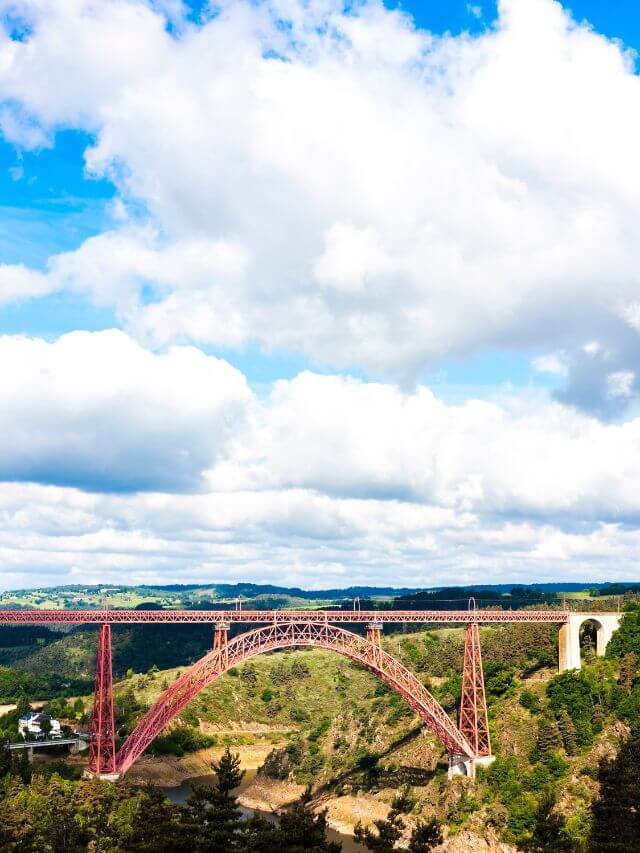
Its height of 122 meters makes it worthy of photographs from the banks of the river. Today, it is part of France’s heritage and a train runs through its structure once a day.
Pont du Gard, near Nîmes
From the highest viaduct to the largest aqueduct in the world. The Pont du Gard, located in the south of France, is one of its major tourist attractions for its history and present.
Originally built during the Roman Empire, in the 1st century AD, as part of the Nîmes aqueduct, it is located near the village of Remoulins in the Gard department.
The Gard Bridge is 49 meters high and built on three levels. It can be crossed or appreciated from the banks of the river, even visit it and enter a part of its interior. Its beauty is an invitation to photography.
Pont Valentré, near Cahors
Pont Valentré is located in the Lot department. Its history dates back to the Middle Ages when it was built as part of a defense system typical of the architectural advances of the time.
Its history and architecture are intermingled with its legends. According to the latter, the devil that can be seen carved in the rock was tricked by a cunning architect who used it to move the construction forward quickly.
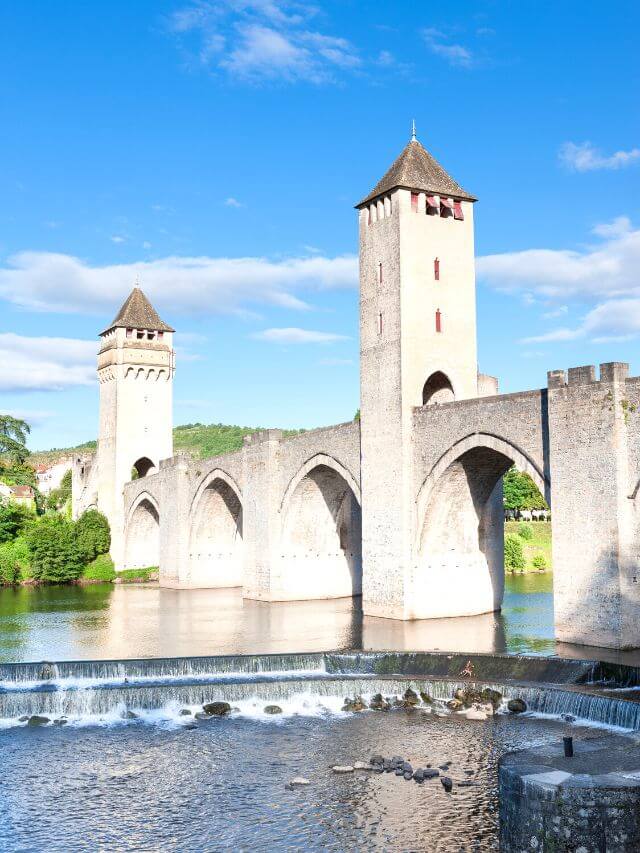
For this reason, the bridge attracts countless tourists who seek to know “where the devil was trapped.”
Today it has three fortified towers and six pointed arches and is a symbol of the city of Cahors. In addition to visiting it, it is worth recommending the breathtaking views from boat rides.
Unesco World Heritage Site.
Briare Aqueduct
Located in central France, the Briare Aqueduct is 662 meters long and was the longest in the world for a long time. Inaugurated in 1896, it is built on 14 stone pillars and is 11.5 meters wide.
Again, we meet the Eiffel company, which was at the forefront of the construction of this work.
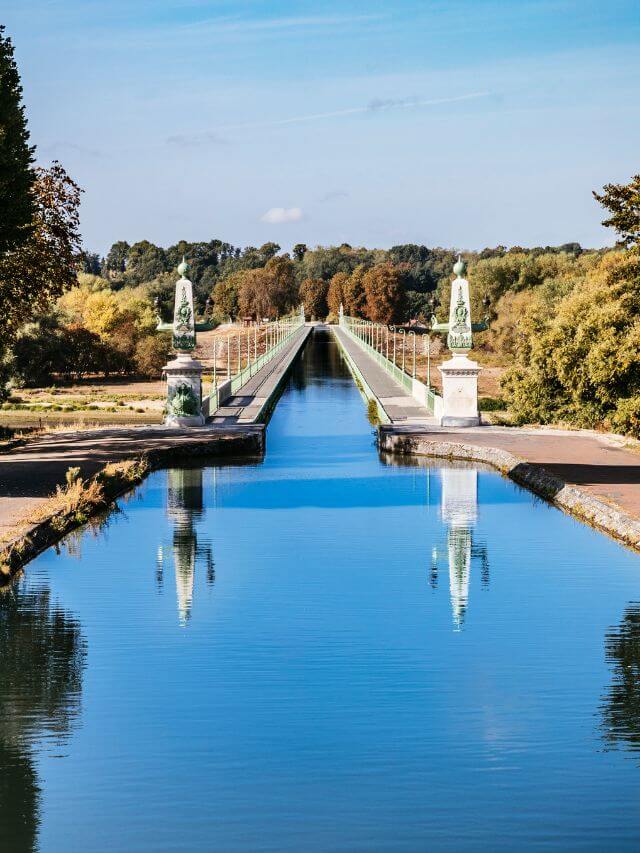
Such dimensions entail other dimensions: the aqueduct transports 13,000 tons of water. Its function is to regulate the Loire River’s flow and keep it navigable.
As an architectural monument, it is of remarkable beauty when the lamps illuminating each side are lit. In addition, columns such as those of the Pont Alexander III can be seen at their ends.
Pont Ambroix
Located between the communes of Gallargues-le-Montueux (Gard) and Villetelle (Hérault), in the Languedoc region, in the south of France, the Pont Ambroix, Pont d’Ambrussum has its origins in the Roman Empire, in the 1st century.
Built with large stones measuring 1.40 by 0.7 and 0.5 meters, the bridge was originally 180 meters long and had eleven semicircular arches. At present, only one-fifth of that construction remains.
It is worth mentioning that the bridge was voluntarily demolished during the Middle Ages to favor the transit of another bridge with a toll. It is currently a tourist attraction of undeniable historical, documentary, and architectural value.
Normandy Bridge
Crossing the Seine estuary, connecting Le Havre to Honfleur, the Pont de Normandie is another cable-stayed bridge that held the length record for several years.
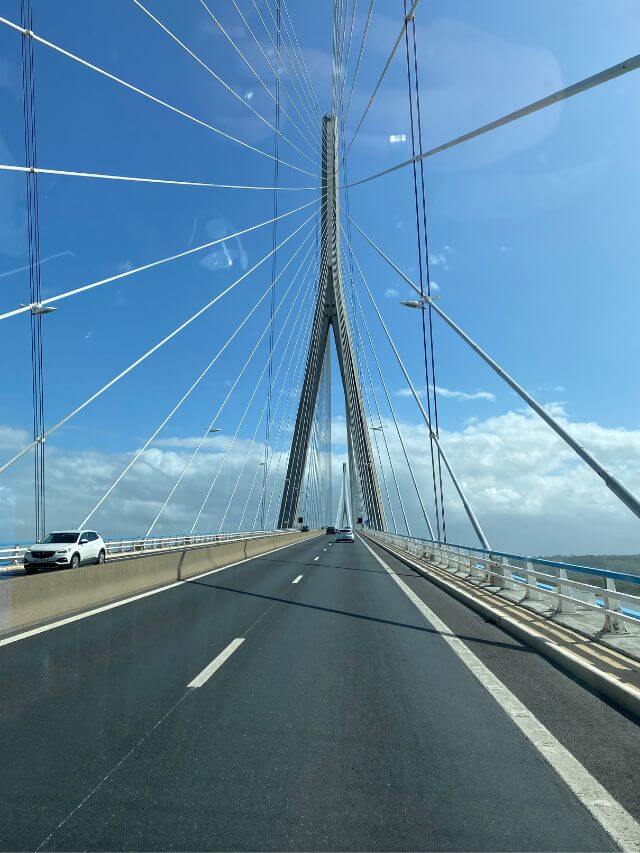
With a length of 2143 meters and its steel stays, this bridge, inaugurated in 1995, has four lanes for automobiles, two for bicycles, and two for pedestrians.
Its inverted Y-shaped pillars and the 856 meters that separate one from the other make it particularly attractive in its futuristic aesthetics.
Pont Jacques Chaban Delmas, Bordeaux
Imposing a drawbridge built between 2009 and 2012, the Pont Jacques Chaban Delmas connects the Brazza dock to the Bacalan dock. Located in Bordeaux, it is named after a former mayor.
As a drawbridge, its particularity is that it has four towers that raise the central part of the bridge vertically in its entirety. This makes way for large ships.
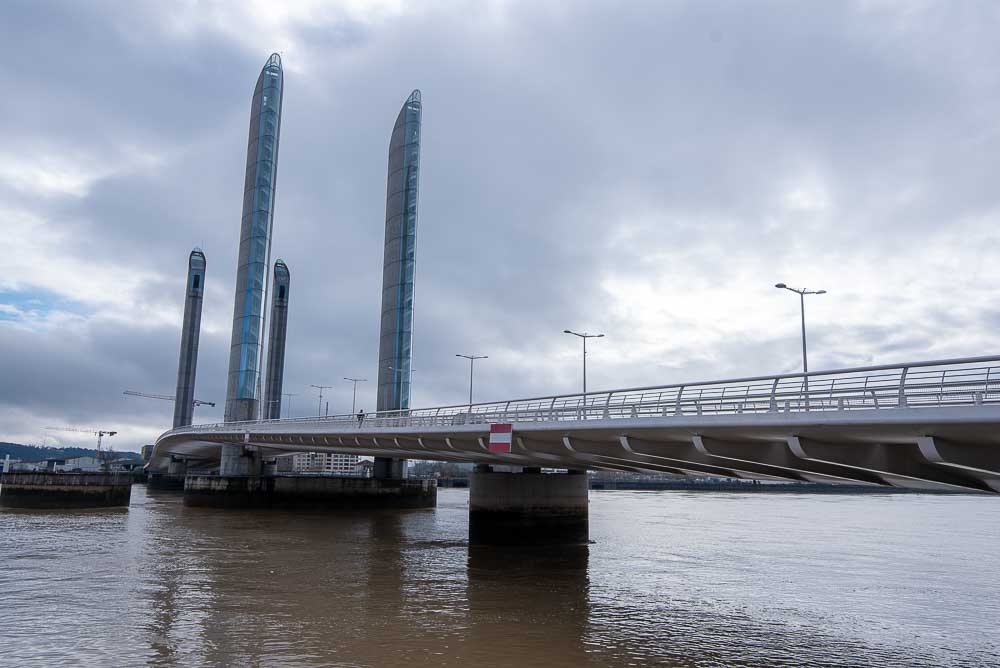
It is impressive to contemplate it in operation at night and from a distance, for example, in a café from the harbor promenade, to appreciate the monumental structure and its functional dynamics.
Bordeaux Stone Bridge
Finally, Bordeaux and the Garonne River again. The Pont de Pierre or Stone Bridge, built in the 19th century, its 17 arches are said to correspond to the number of letters of the man who commissioned it, Napoleon Bonaparte.
On each side of the bridge, you can see the brick construction and observe white medallions in honor of the emperor and representations of the city’s coat of arms. For history lovers, it is an undeniable attraction.
For those who enjoy appreciating architecture and the urban landscape, the bridge of arches and bricks is a postcard that never disappoints its visitors.

Plan Your Trip to France
- The weather in France
- What to bring to France
- The most beautiful villages in the South of France
- The most important cities of Provence
- The best free walking tours of Paris

This post may include affiliate links. This means that we will receive a small commission if you make a purchase through our links. It has no additional cost for you. With this, you help us to continue creating free content for you.
This post may include affiliate links. This means that we will receive a small fee if you make a purchase through our links. It has no additional cost to you. It’s a win-win!
